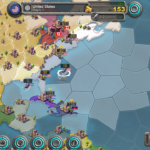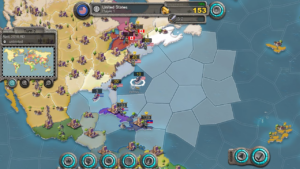One of the oldest challenges teachers face is to meet the individual and collective need of their students. Interestingly enough, qualifications do not make a good teacher, neither does socioeconomic status. The ability to strategize, and make the classroom smarter is the mark of a true teacher. This can be done by using good teaching strategies.
In this article, we look at some of the ways teachers can impact more on their students by using creative strategies. As you will soon learn there are a whole lot of teaching strategies that make smarter classrooms which you can use to your own advantage as a teacher.
Teaching Strategies for Smarter Classroom
Clear Illustrative Explanations
This is the oldest and most traditional way of teaching students. After all, teaching is all about making an individual understand a concept. The strength of this strategy lies in the descriptive approach it adopts. Teachers that are really good at explanation through descriptions know just how to use the right images and videos to break down complex concepts into absorbable bits which the student can easily absorb.
For the most part of it, this strategy often adopts an unorthodox approach to explaining a topic to students. More often than not, these strategies yield better results than the orthodox procedures schools use.
Brilliant Use of Humour
Students of all ages feel more comfortable learning even difficult subjects so long as the instructor knows just how to strategically make the lesson less tedious with the use of comedy. In recent times, some teachers have been accused of making the subjects they teach look more demanding than they really are. While this is true to an extent, it is also true that some subjects are naturally more demanding than the others. This is where humour comes in.
The teacher does not need to be a Christ Rock to get this hack right. A warm welcome to students as well as funny statements here and there can go a long way in creating the much-needed candour students need for learning. If you really have concerns for your students, you will give this a try whether you are a natural extrovert or chronic introvert.
Quiz
Not only does this activity have the potential to make student several times smarter than they already are, it can also be a means of relieving tension in the classroom. A quiz can happen in many ways. The teacher may divide the class into a number of groups and have them compete against one another, or have each student answer some questions individually. Either way, students learn faster even as the competitive nature of quizzes forces them to develop smarter minds.
Daily Assessments
Although assessments are not in any way new to teachers and students, daily assessments mostly are. Most students would rather not read their books or carry out researches until it’s time for class exams. But with the strategic use of daily assessments, teachers can keep their students alert on a daily basis by conducting daily assessments.
For some teachers, this is as simple as a 3-minute test before learning commences or closes for the day. Whichever method the teacher employs, daily academic exercise is one of the tested teaching strategies for a smarter classroom. It is definitely gruesome to do this daily but it’s worth the effort.
Respect for Student’s Individuality
All humans are not born equal; hence have different mental and physical abilities. To create a truly smart classroom, the teacher has to take this understanding very seriously. With respect to the concern raised above, teachers can create sessions when he tackles the academic problems of each student. These sessions allow students to come out of their shells and insecurities as they begin to see the teacher as a friend instead of a commanding officer.
Granting Students Some Independence
In truth, it is the job of teachers to instruct students every academic day. But gone are the days when teachers used to do all the teaching, and even control every aspect of the learning process. For instance, while some teachers would have their students submit an assignment or term paper on a particular day, say Monday next week, some teachers are more flexible. They could provide a timeframe of about one academic week, say, Monday to Friday next week.
Another example would be to allow students make parts of their notes; though this works on certain grades where students are old enough to handle the task. This independence comes with all-around responsibility which continues to drive students toward excellence. So it is clear that granting students some independence is one of the teaching strategies for smarter classrooms.
Make Students Teach
This was my favourite activity as a student. Nothing gave me more joy than the opportunity to do my teacher’s job. It was, and still is a source of challenge and pride. Breaking a topic into multiple parts and letting a student handle a part, even if it’s just for three minutes, could be your best weapon as a teacher who wants his students to learn quickly.
Not only does this activity bring out the natural best in students, it also helps the teachers cover the syllabus faster. Even at the tertiary institution level, this is a very vital teaching strategy. One of my professors once used it to effectively cover 6 weeks of academic work in just one day.
Classroom Discussion
Sometimes, it pays to ease the tension of classrooms with a little fun but educative discussion. An easy way teachers can do this is to get students talking by asking tentative questions about a topic that has already been taught or soon to be taught. By creating a friendly atmosphere as this, students can comfortably contribute to the topic of the discussion. As knowledge flies from one brain to the other, students learn faster and get smarter in the process. For maximum results, discussions should be held after a topic has been taught as this is when more ideas will be shared and more problems solved together.
Using Feedback
It is common for businesses to ask their customers for feedbacks after using their services or products, but quite rarely do teachers do the same. Some would even encourage their customers to write great reviews for them on Amazon but this is not popular in the academic world. Should teachers ask their students for feedbacks? Well, yes. Let’s look at it this way.
Students are a school’s customers or clients. Their tuition fees are payments for the services they will be rendered in class. So they too should be allowed, and even encouraged to leave feedbacks after every lecture. The teacher can make this an open feedback session after a teaching session or have students drop written feedbacks in an opinion box. Either way, students will help their teachers teach them better; an improvement which will make the classroom a smarter place for kids.
Conclusion
Teaching strategies for smarter classrooms cannot be fully exhausted by any single article as there are too many of them. Beyond the scope of the strategies listed here, teachers can use their intuition to create newer, innovative strategies too. If possible, students can help teachers develop strategies which will result in a win-win situation for all.

















